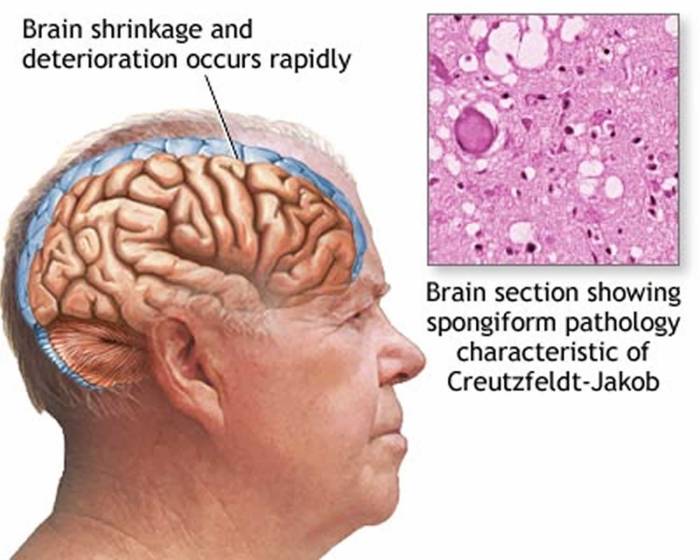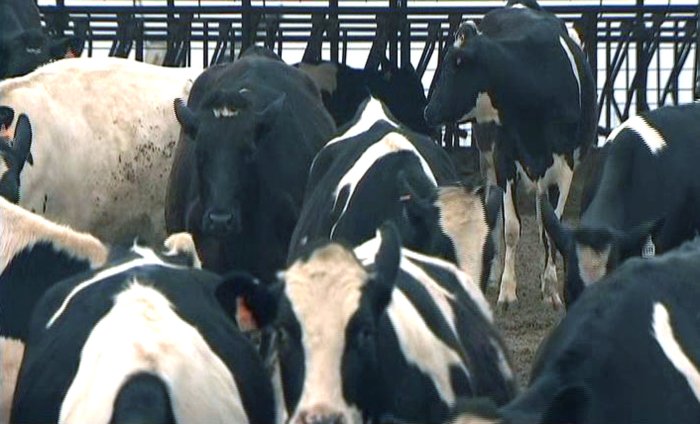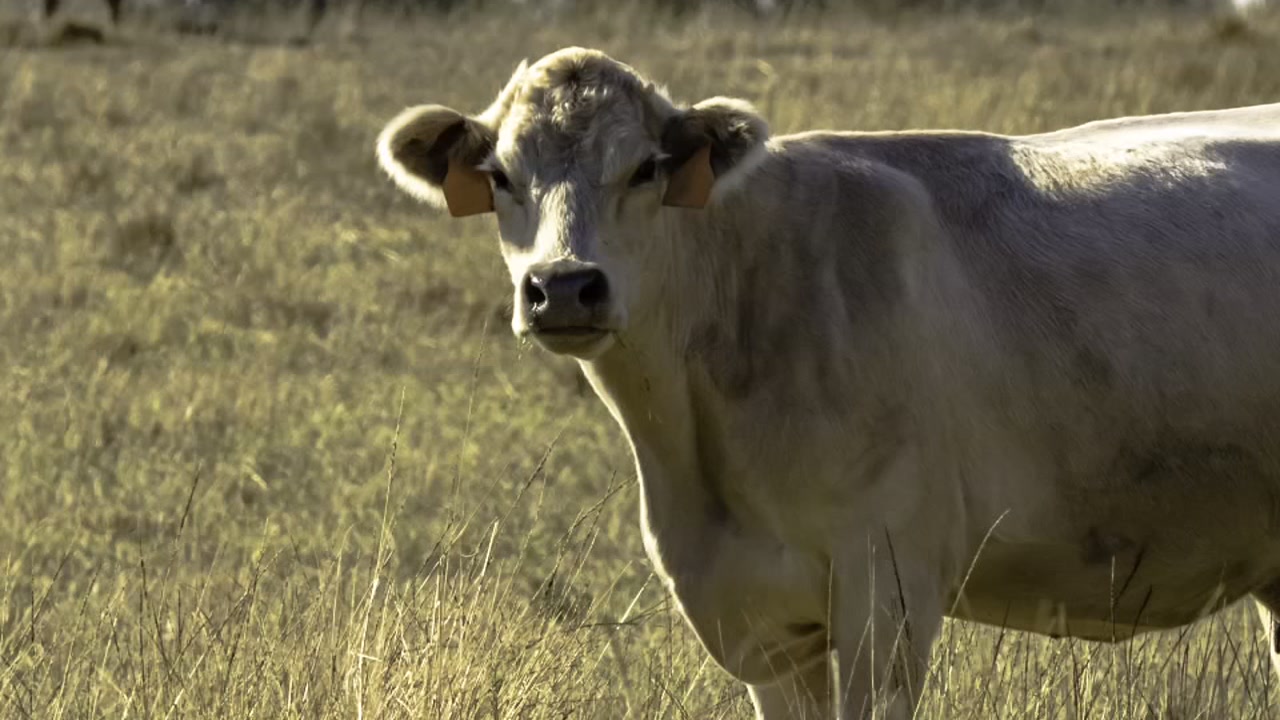Mad cow disease crossword clue sets the stage for this enthralling narrative, offering readers a glimpse into a story that is rich in detail and brimming with originality from the outset. Bovine Spongiform Encephalopathy (BSE), commonly known as mad cow disease, is a devastating illness that has had a profound impact on the cattle industry and public health worldwide.
In this comprehensive guide, we delve into the causes, symptoms, diagnosis, and prevention of this enigmatic disease, shedding light on its historical significance and ongoing research advancements.
Join us as we unravel the complexities of mad cow disease, exploring its origins, transmission methods, and the challenges associated with its detection. We will examine the clinical signs and neurological effects of BSE in cattle, discussing the impact it has on the central nervous system.
Furthermore, we will delve into the public health implications of mad cow disease, highlighting the potential risks to humans and the measures taken to safeguard consumer safety.
Bovine Spongiform Encephalopathy (BSE)

Bovine Spongiform Encephalopathy (BSE), commonly known as mad cow disease, is a fatal and degenerative brain disease that affects cattle. It is a transmissible spongiform encephalopathy (TSE), a group of neurodegenerative diseases that affect both humans and animals.
Causes and Origins
The exact cause of BSE is still unknown, but it is believed to be caused by an abnormal form of a protein called prion. Prions are infectious agents that are made up of misfolded proteins. They are highly resistant to heat, radiation, and proteolytic enzymes, making them difficult to destroy.
Transmission Methods
BSE is primarily transmitted through the ingestion of contaminated feed. Cattle can become infected by eating feed that contains the remains of infected animals, such as bone meal or meat and bone meal. BSE can also be transmitted through the use of contaminated surgical instruments or other equipment.
Symptoms and Effects of Mad Cow Disease
Mad cow disease, also known as bovine spongiform encephalopathy (BSE), is a fatal neurodegenerative disease that affects cattle. The disease is caused by an abnormal form of a protein called a prion, which accumulates in the brain and spinal cord, leading to a range of neurological and behavioral changes.
Clinical Signs and Symptoms of BSE in Cattle
The clinical signs and symptoms of BSE in cattle can vary depending on the stage of the disease. In the early stages, cattle may exhibit subtle changes in behavior, such as becoming withdrawn or irritable. As the disease progresses, more severe neurological signs develop, including:
- Ataxia (incoordination and difficulty walking)
- Tremors
- Muscle weakness
- Seizures
- Behavioral changes, such as aggression or depression
Neurological and Behavioral Changes Associated with BSE
The neurological and behavioral changes associated with BSE are caused by the accumulation of prions in the brain and spinal cord. Prions are abnormal forms of proteins that can misfold and cause other proteins to misfold as well. This leads to the formation of amyloid plaques and neurofibrillary tangles, which disrupt the normal function of the brain.
Impact of BSE on the Central Nervous System
The impact of BSE on the central nervous system is devastating. The accumulation of prions leads to neuronal damage and cell death, resulting in a progressive decline in cognitive function, motor skills, and behavior. In the later stages of the disease, cattle may become completely paralyzed and unable to eat or drink.
Diagnosis and Detection of BSE: Mad Cow Disease Crossword Clue

Diagnosing and detecting BSE in cattle is crucial for controlling and preventing the spread of the disease. Several methods are employed to identify BSE, including histopathology, immunohistochemistry, and other diagnostic tests.
Histopathology
Histopathology involves examining brain tissue samples under a microscope to detect characteristic changes associated with BSE. These changes include the presence of amyloid plaques, neuronal loss, and spongiform degeneration, which gives the disease its name.
Immunohistochemistry
Immunohistochemistry is a technique that uses antibodies to detect specific proteins or antigens in tissue samples. In BSE diagnosis, immunohistochemistry can identify the presence of the abnormal prion protein (PrP Sc) associated with the disease.
Challenges and Limitations
Despite the availability of diagnostic methods, BSE detection can be challenging due to the long incubation period and the lack of specific clinical signs in the early stages of the disease. Additionally, the sensitivity and specificity of diagnostic tests can vary, and false positives or negatives can occur.
Public Health Implications of Mad Cow Disease

Bovine spongiform encephalopathy (BSE), commonly known as mad cow disease, poses significant public health implications due to its potential transmission to humans. The consumption of contaminated beef products can lead to variant Creutzfeldt-Jakob disease (vCJD), a fatal neurodegenerative disorder that affects humans.
Mad cow disease, also known as bovine spongiform encephalopathy (BSE), is a fatal neurological disorder that affects cattle. While searching for information on mad cow disease crossword clues, I stumbled upon the leccion 2 contextos answer key . Although seemingly unrelated, it’s a valuable resource for Spanish language learners.
Returning to the topic of mad cow disease, its symptoms include progressive loss of coordination, behavioral changes, and ultimately death.
Measures to Prevent Human Exposure
To safeguard public health, stringent measures have been implemented to prevent human exposure to BSE. These measures include:
- Bans on Feeding Cattle Animal By-Products:The use of animal by-products, such as meat and bone meal, in cattle feed has been banned in many countries to prevent the spread of BSE.
- Testing and Culling of Infected Cattle:Infected cattle are identified through testing and culled to prevent the entry of contaminated meat into the food chain.
- Surveillance and Monitoring:Regular surveillance and monitoring programs are in place to detect and contain potential outbreaks of BSE.
Impact on Public Health and Consumer Confidence
BSE outbreaks have had a profound impact on public health and consumer confidence. The fear of contracting vCJD has led to a decline in beef consumption and a loss of trust in the food supply chain. The economic consequences of BSE outbreaks can be substantial, affecting the livestock industry and related businesses.
Prevention and Control of Mad Cow Disease

Preventing and controlling the spread of mad cow disease (BSE) is crucial to protect public health and the livestock industry. Several strategies have been implemented to minimize the risk of BSE outbreaks.
Surveillance and Monitoring, Mad cow disease crossword clue
Surveillance programs are essential for early detection of BSE cases. Regular testing of cattle and monitoring of animal health records help identify infected animals and trace their contacts. Monitoring also includes surveillance of feed supplies to prevent the introduction of contaminated materials.
International Cooperation
International cooperation is vital in controlling BSE. Sharing information about disease outbreaks, implementing harmonized control measures, and coordinating research efforts can prevent the spread of the disease across borders. Collaboration between countries allows for rapid response and containment of BSE outbreaks.
Historical Cases and Outbreaks of Mad Cow Disease

Bovine spongiform encephalopathy (BSE), commonly known as mad cow disease, has emerged as a significant concern in the cattle industry and agriculture worldwide. Understanding the historical cases and outbreaks of BSE is crucial for comprehending its impact and developing effective preventive measures.
The first known case of BSE was reported in the United Kingdom in 1986. Since then, outbreaks have occurred in various countries across the globe, including Europe, North America, Asia, and Africa.
Timeline of Significant BSE Outbreaks
- 1986: First case of BSE reported in the United Kingdom.
- 1990s: BSE outbreak in the United Kingdom reaches its peak, with over 180,000 confirmed cases.
- 1996: BSE detected in cattle in Europe, leading to a ban on British beef exports.
- 2001: BSE outbreak in Canada, resulting in the recall of over 10 million pounds of beef.
- 2003: BSE confirmed in cattle in the United States, triggering widespread concern and heightened safety measures.
- 2018: BSE detected in cattle in Japan, prompting an investigation into the source of infection.
The BSE outbreaks have had a profound impact on the cattle industry and agriculture, leading to significant economic losses and consumer concerns. The disease has also raised questions about the safety of beef products and the effectiveness of existing food safety regulations.
Impact of BSE Outbreaks on the Cattle Industry and Agriculture
- Economic losses:BSE outbreaks have resulted in substantial financial losses for the cattle industry due to the culling of infected animals, trade restrictions, and consumer avoidance of beef products.
- Trade disruptions:BSE outbreaks have led to international trade bans and restrictions, disrupting the global beef market and affecting the livelihoods of cattle producers and exporters.
- Consumer confidence:BSE outbreaks have eroded consumer confidence in beef products, leading to a decline in demand and a shift towards alternative protein sources.
Lessons Learned from Past BSE Outbreaks
- Importance of surveillance:Early detection and surveillance systems are crucial for identifying and containing BSE outbreaks, preventing their spread, and mitigating their impact.
- Effectiveness of feed bans:The implementation of feed bans on animal-derived protein sources has been effective in reducing the risk of BSE transmission.
- Consumer education:Public education and awareness campaigns are essential for informing consumers about BSE, its risks, and the importance of safe food handling practices.
The historical cases and outbreaks of BSE have highlighted the importance of ongoing research, collaboration, and proactive measures to prevent and control this devastating disease. Lessons learned from past outbreaks have guided the development of robust surveillance systems, effective feed bans, and comprehensive consumer education programs.
Current Research and Advancements in BSE

Ongoing research on BSE focuses on improving diagnostic techniques, developing treatments, and understanding the disease’s mechanisms. Advanced technologies, such as prion protein detection and genetic analysis, are being explored to enhance early detection and monitoring of BSE.
Diagnostic Tools
- Rapid and sensitive diagnostic tests, like Real-Time Quaking-Induced Conversion (RT-QuIC), are being developed to detect BSE in live animals, allowing for early intervention and containment.
- Improved surveillance methods, including post-mortem brain examination and lymph node sampling, are being implemented to enhance BSE detection in slaughtered cattle.
Treatments and Therapies
Research efforts are underway to identify potential treatments for BSE. Studies are exploring the use of anti-prion drugs, gene therapy, and immune-based approaches to mitigate the effects of the disease and improve animal welfare.
Disease Mechanisms
Understanding the molecular and cellular mechanisms underlying BSE is crucial for developing effective control strategies. Research focuses on prion protein misfolding, transmission pathways, and host-pathogen interactions to gain insights into disease progression and potential vulnerabilities.
Implications for Control and Prevention
Ongoing research has significant implications for BSE control and prevention. Early detection and rapid response are critical for containing outbreaks and minimizing the spread of the disease. Improved diagnostic tools and treatments can enhance surveillance, facilitate timely intervention, and potentially reduce the impact of BSE on animal health and the food chain.
Question Bank
What is the scientific term for mad cow disease?
Bovine Spongiform Encephalopathy (BSE)
How is mad cow disease transmitted?
Primarily through the consumption of contaminated meat and bone meal
What are the clinical signs of mad cow disease in cattle?
Behavioral changes, difficulty walking, and neurological symptoms
Can mad cow disease be transmitted to humans?
Yes, through the consumption of contaminated beef products